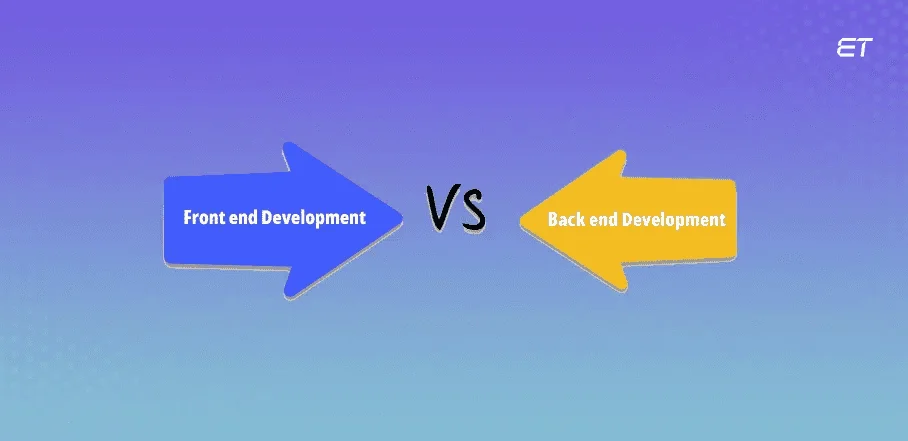
Frontend vs Backend Development: Understanding Key Differences
Synopsis: The two most common terms used in web development are frontend and backend. The frontend is the part of a website that interacts with users, while the backend is the part which controls the frontend. To increase the website’s functioning, each side must interact and cooperate with the other as a single entity. Let’s understand frontend vs backend development with the help of this guide.
At the time of writing this blog, there are 1.18 million (source: internetlivestats.com) live websites worldwide. But not all of them are successful. One with a stunning frontend and highly functional backend is winning users’ hearts and helping the owners grow their businesses.
Effective web development requires an understanding of frontend vs backend development because your daily interactions with the internet are made possible by frontend and backend development.
Web developers typically fit into two groups. A frontend developer handles the theme, including the presentation, pictures, and style, following the best practices when creating a website. The backend developer handles the database, security, site performance, and users.
Other than these two types of web developers, fullstack developers are also available. Fullstack developers are skilled at both frontend and backend programming and ought to be knowledgeable about every layer of the website.
Frontend vs Backend development comparison is a must to understand if you are new to the web development industry. So, let’s start with the basics and cover every facet of these two integral parts of web development.
What is Full Stack Development?
Before understanding the differences between front and back-end, it is crucial to have at least the basic know-how of full stack development.
In simple terms, full stack development is the inclusive process of creating the front and back-end of a software or website. You can ascertain full stack as the all-rounder amongst the three.
For a quick overview of all three types of development, look at the table below.
| Parameter | Frontend Development | Backend Development | Fullstack Development |
| Responsibilities | UI/UX design, user interaction | Server logic, databases, APIs | Both frontend and backend development |
| User Experience | Focuses on visual presentation | Influences app performance | Balances user interface and functionality |
| Scope | User interface and design | Database management, data processing | Complete app development lifecycle |
| Skills Requirement | HTML/CSS/JS proficiency | Backend programming expertise | Proficiency in both frontend and backend |
| Interaction | Direct interaction with users | Indirect interactions through server | Manages user interactions and server logic |
| Technologies | HTML, CSS, JavaScript | Python, Java, PHP, databases | Combination of frontend and backend tools |
What is Frontend Development?
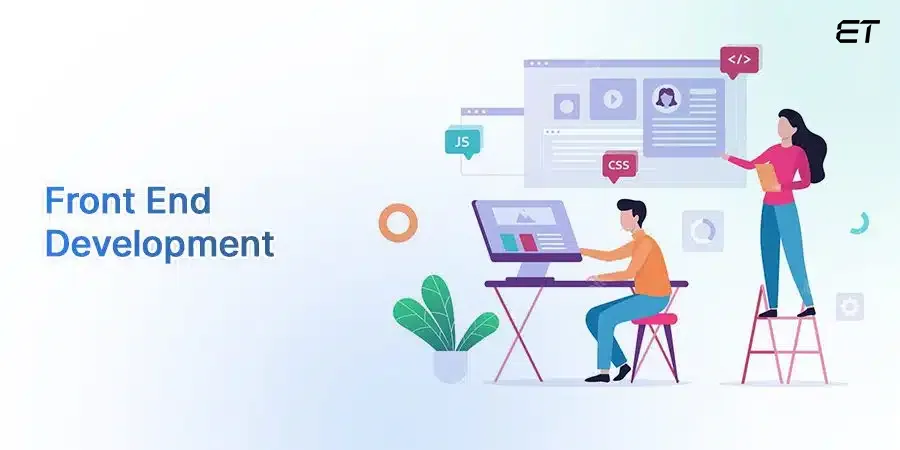
First, get clear about what is frontend!
Definition of Frontend
Frontend refers to the part of web development that involves designing and creating the UI & UX of a website or application. It encompasses the visual elements, layout, and interactive components that users directly interact with. It is the part of the website which is visible to us.
Frontend Development
The process of building a website’s graphical user interface (GUI) is known as frontend web development. Frontend development companies create the visible and interactive components of websites and applications that users directly engage with. They encompass the design, layout, and user interface elements, as well as the programming and scripting required to make these elements dynamic and functional.
In simple words, frontend development, also known as client-side development, is the process of creating the elements of a website that users interact with, such as text boxes and buttons. Usually, HTML, CSS, and JavaScript are used in the frontend.
Who are Frontend Developers?

Frontend developers are professionals who specialize in creating the user-facing components of websites and applications. Frontend developers handle the design and user interface of the website. Frontend developers play a pivotal role in shaping the visual appeal, usability, and overall user experience of websites and applications, contributing to the success of digital projects.
When you hire frontend developers, collaborate with designers to integrate frontend elements with server-side functionalities. Their role is crucial in delivering visually appealing and user-friendly digital platforms that align with user expectations and industry standards.
Explore Core Features of Frontend

Frontend development comprises several essential features that collectively create the user interface and experience of websites and applications. These features contribute to the overall usability, aesthetics, and functionality of the frontend:
| Feature | Explanation |
| User Interface Design | Frontend developers design visually appealing and intuitive layouts, ensuring a positive user experience through well-organized content, navigation, and interactive elements. |
| Responsive Design | Frontend makes applications adaptable to various screen sizes and devices, ensuring consistent performance and usability across desktops, tablets, and mobile phones. |
| HTML Structure | HyperText Markup Language (HTML) forms the structural foundation of web content, defining headings, paragraphs, lists, and other elements to present information logically. |
| Accessibility | Implementing accessible design practices ensures that web content is usable by individuals with disabilities, adhering to web accessibility guidelines and standards. |
| Integration | Frontend components often integrate with backend systems through APIs (Application Programming Interfaces) to fetch and display dynamic data, enhancing the application’s functionality. |
Roles and Responsibilities of Fontend Developers

Here are the typical roles and responsibilities of dedicated frontend developers:
- Create user-friendly and visually appealing interfaces that align with design concepts and brand guidelines.
- Write clean and well-structured HTML code and apply CSS styles for accurate rendering and styling of web content.
- Implement interactive elements, animations, and dynamic features using JavaScript libraries and frameworks.
- Develop layouts that adapt seamlessly to different screen sizes and devices, ensuring consistent user experiences.
- Test and optimize frontend code to ensure consistent performance across various web browsers.
- Apply web accessibility best practices to ensure the platform is usable by individuals with disabilities.
- Work closely with designers, backend developers, and stakeholders to integrate frontend elements with backend functionalities.
- Optimize frontend elements for faster page loading, including image compression, code minification, and caching strategies.
- Identify and fix frontend bugs, conduct testing to ensure functionality, and use debugging tools to troubleshoot issues.
- Continuously enhance the user experience by implementing user feedback and staying updated on industry trends (like AI in web development) and best practices.
What is Backend Development?

We will start with understanding the backend first.
Backend
Backend refers to the technical foundation of a software application or website that operates behind the scenes. The code that enables an application or software to run and cannot be viewed by a user is known as the back end. The backend of a computer system is where most data and operating syntax are kept and accessed.
The dedicated backend developer focuses on functionality, data management, and the logic that enables the frontend to operate. It’s responsible for data processing, security, and the overall functioning of the application without user interaction.
Backend Development
Backend development refers to the process of developing and maintaining the server-side components of a software application or website. It involves building the server, database, and application logic that enables the frontend (user interface) to function.
Backend programmers create code that enables smooth database and application communication. They are responsible for looking after and maintaining a website’s back end, which includes databases, servers, and apps. In simple words, we can say that they oversee what you cannot see.
Who are Backend Developers?
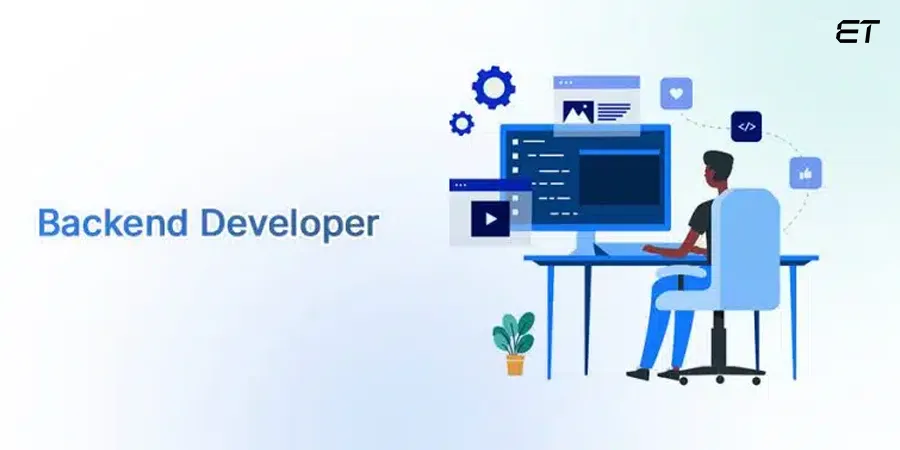
Backend developers are software engineers responsible for building and maintaining the server-side components of applications. They design databases, develop APIs, manage data processing, ensure security, and handle server infrastructure. Their work enables seamless data management, authentication, and overall functionality, ensuring that the application’s frontend operates smoothly and delivers a reliable user experience.
The functionality of the website and how to implement changes and updates in the background are also monitored by backend developers. The developer is responsible for guaranteeing that the software can provide any statistics or information requested by the user when the request is made through the User Interface Framework. Additionally, they ensure the website is scalable enough to handle heavy traffic once many users use it.
Explore Core Features of the Backend
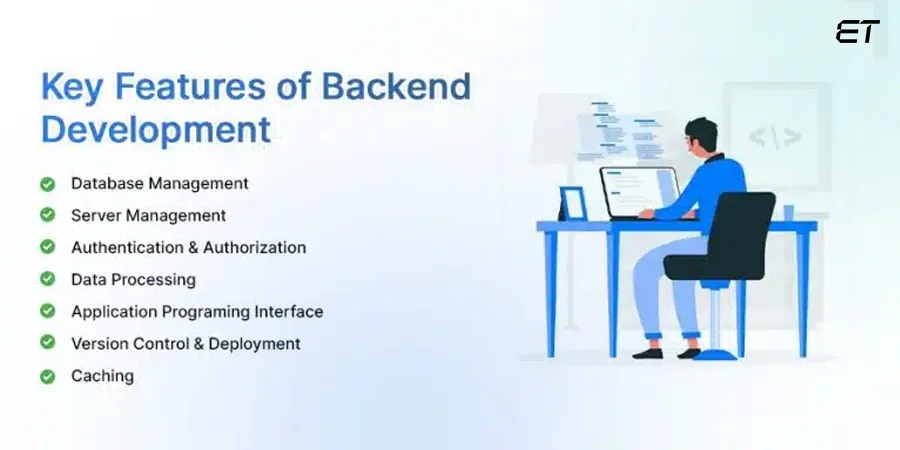
The backend of a software application plays a critical role in ensuring its functionality, performance, and security. Here are some key features of the backend:
| Feature | Explanation |
| Database Management | Backend developers design and manage databases where application data is stored. This involves creating efficient data schemas, optimizing queries, and ensuring data integrity. |
| Server Management | The backend includes the management of servers responsible for hosting the application and handling incoming user requests. |
| Authentication and Authorization | Security is a fundamental concern for backend development. Backend systems manage user authentication (verifying user identities) and authorization (determining what actions users can perform). |
| Data Processing | Backend components process data from various sources. This could involve analyzing user inputs, performing calculations, aggregating data, and generating reports. |
| API (Application Programming Interface) | Backend developers design APIs that enable the frontend and external services to interact with the application’s data and functionality. |
| Version Control and Deployment | Backend developers use version control systems (e.g., Git) to manage code changes and collaborate effectively. |
| Caching | Caching involves storing frequently accessed data in a faster storage medium (like memory) to reduce the need to retrieve it from slower storage (like a database). |
Roles and Responsibilities of Backend Developers
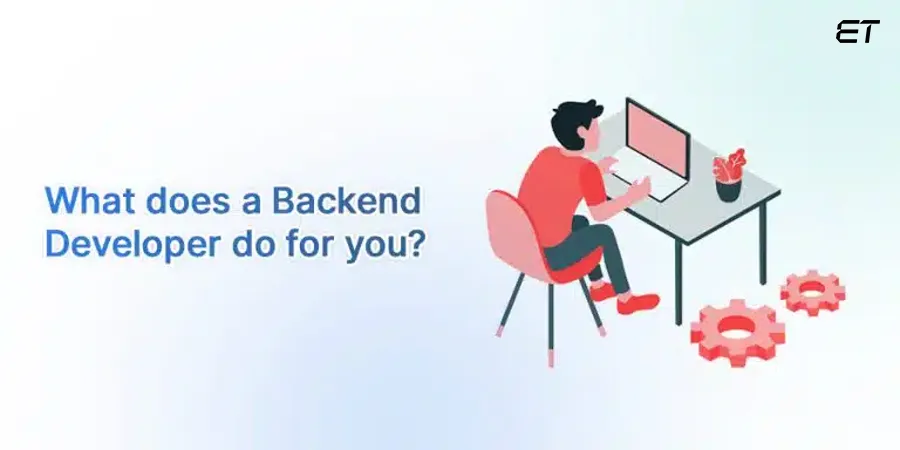
Below are the concise roles and responsibilities of dedicated backend developers.
- Design and maintain databases, ensuring efficient data storage and retrieval.
- Optimize queries for fast and accurate data processing.
- Design and implement APIs for communication between the frontend and backend.
- Develop server-side logic to handle user requests and application workflows.
- Implement user authentication and authorization mechanisms.
- Optimize backend code for speed and efficiency.
- Implement caching and data compression to enhance performance.
- Design systems that can scale to accommodate growing user loads.
- Implement load balancing and horizontal scaling strategies.
- Set up and manage server environments and configurations.
- Monitor server health and address infrastructure-related issues.
- Work closely with frontend developers to integrate frontend and backend components.
- Collaborate with cross-functional teams to deliver a cohesive application.
- Identify and address bugs, performance bottlenecks, and other issues. Use debugging tools to find and resolve problems.
- Use version control systems (e.g., Git) to manage code changes.
- Follow coding standards and best practices for maintainable code.
Let’s cover a quick comparison of frontend vs backend development.
Key Differences: Front-end vs Back-end
Refer the following table to distinguish between front and back-end development. We’ve covered 10 essential factors to help simplify the main differences.
| Aspect | Frontend Development | Backend Development |
| Focus | User interface and user experience. | Server-side logic, data processing, and storage. |
| Independency | Cannot work without backend support | Work independently of the frontend |
| Responsibilities | Designing, styling, and interactivity of UI. | Handling server requests, data storage, and security. |
| Skills Required | HTML, CSS, SASS, and JavaScript | Python, Ruby, Java, and PHP |
| User Interaction | Direct interaction with users. | Indirect interaction via APIs and data exchange. |
| Performance | User interface responsiveness and smooth interactions. | Server performance, response times, scalability |
| Browser Compatibility | Ensuring compatibility across various browsers. | Browser-independent APIs ensure compatibility. |
| Data Handling | Limited data processing and validation. | Complex data processing, database interactions. |
| Security | Limited user interaction, some input validation. | Authentication, data encryption, access control. |
| Example | Displaying a dynamic news feed on a social media app. | Processing and storing user registration data. |
Frontend vs Backend Development: Top Technologies Frameworks & Libraries
The following are the top frontend vs backend development tools and technologies that developers commonly used to build engaging and responsive user interfaces:

Frontend Development Languages
-
HTML (Hypertext Markup Language)
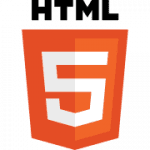
HTML is the base of every web page. It defines the structure and content of a webpage, including headings, paragraphs, images, links, forms, and more. The language generates elements that provide a webpage with its fundamental structure. Its benefits include ease of use, support for many browsers, and integration with other languages.
-
CSS (Cascading Style Sheets)

CSS is in charge of handling web page layout and styling. It controls the visual presentation, including colors, fonts, spacing, and responsive design. CSS is easy because the language is just basic English. CSS allows developers to create visually appealing and consistent designs across various devices.
-
JavaScript

JavaScript is a dynamic scripting language that adds interactivity and functionality to web pages. It enables developers to create features like dropdown menus, image sliders, form validation, and real-time updates. Developers can manipulate the Document Object Model (DOM) with JavaScript to create a seamless user experience.
Frontend development companies & the power of JavaScript frameworks.
Frontend Development Frameworks
-
AngularJS

Created by Google, AngularJS is a full-fledged framework for building dynamic web applications. It provides a robust architecture with features like two-way data binding, dependency injection, and modularization. AngularJS is a powerful frontend framework for building dynamic user interface. Its comprehensive nature suits larger projects that require a structured approach.
-
Vue.JS
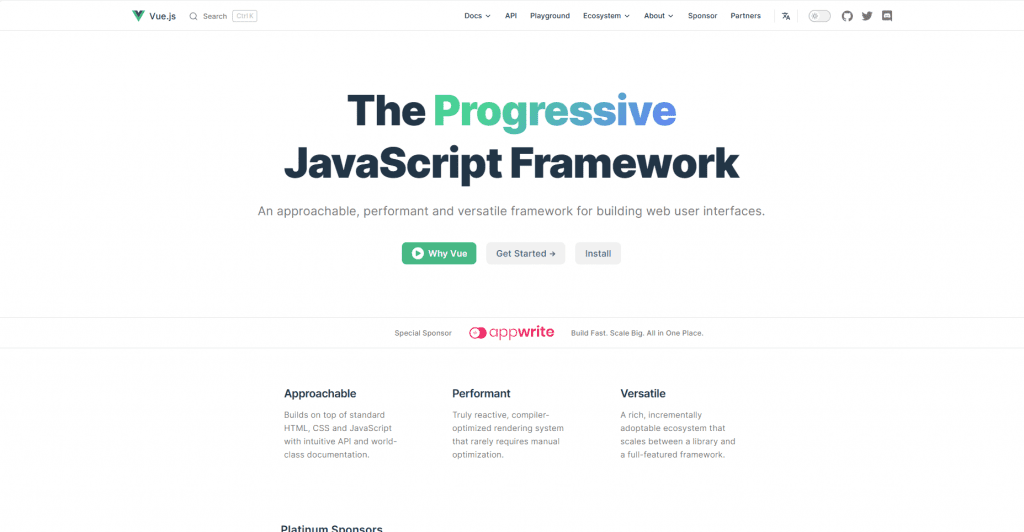
Vue.js is a progressive JavaScript framework known for its simplicity and ease of integration. It allows developers to adopt its features incrementally, making it suitable for small and large projects. Hire Vue.js developers when you require agile development of modern, interactive web applications.
-
Svelte

Svelte is one of the most loved frontend frameworks that compiles components into highly efficient JavaScript code at build time. This approach results in faster runtime performance compared to traditional frameworks. Svelte’s simplicity and declarative syntax lead to concise code, while its built-in state management and transitions make it well-suited for creating interactive web applications.
-
Bootstrap

Although primarily a CSS framework, Bootstrap provides a set of pre-designed UI components and styles that enhance frontend development. It’s known for its responsive design, grid system, and easily customizable components. Bootstrap accelerates development by offering a consistent and visually appealing foundation for creating websites and applications.
Frontend Development Libraries
-
ReactJS
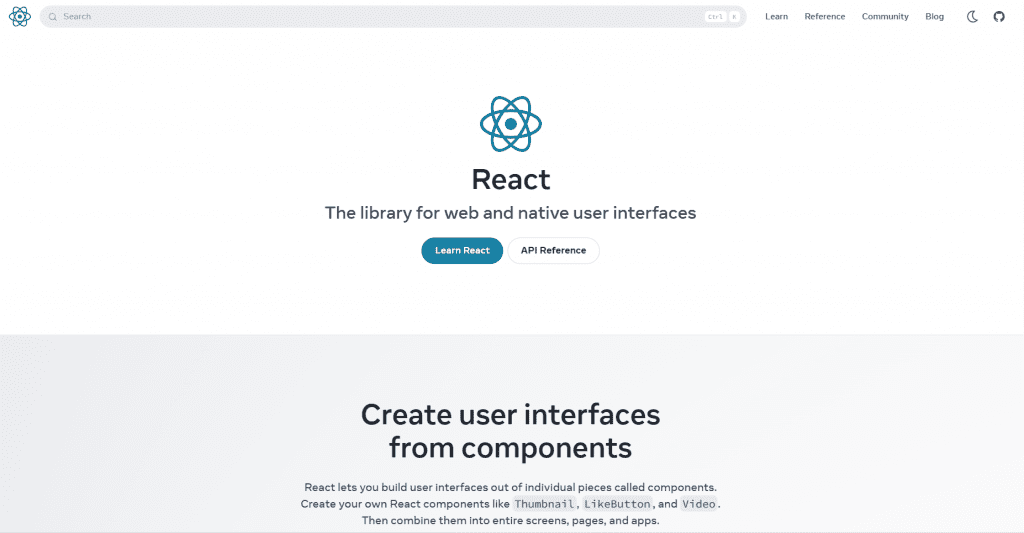
Developed by Facebook, React or ReactJS is a JavaScript library for building user interfaces. React’s component-based architecture encourages reusability and simplifies the management of complex UIs. Hire a React developer when you need to build dynamic, interactive user interfaces and single-page applications.
-
JQuery
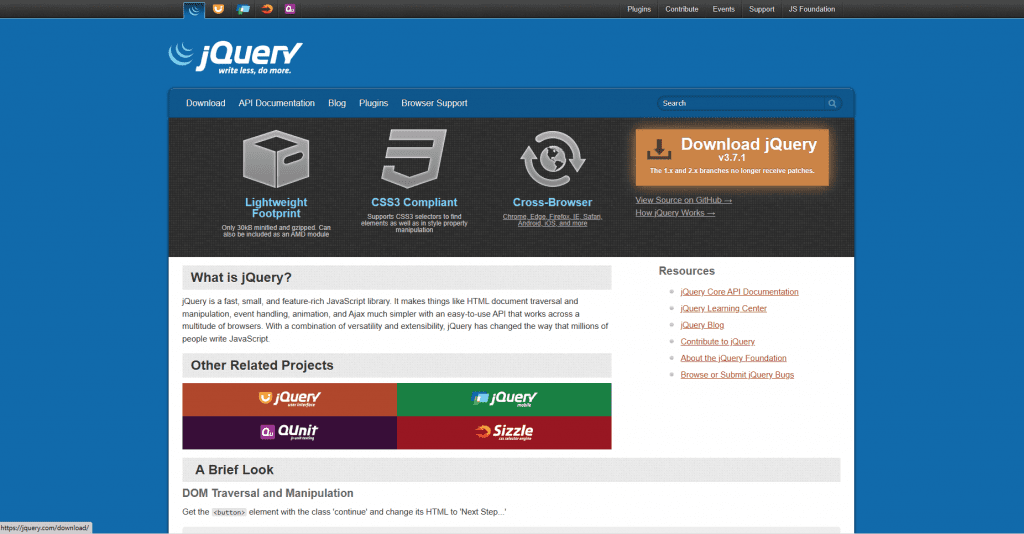
jQuery is a fast and concise JS library that simplifies HTML document traversal, event handling, animation, and AJAX interactions. It eases the creation of interactive and dynamic web content by providing an intuitive API for manipulating DOM elements, managing events, and making asynchronous requests.
-
Axios
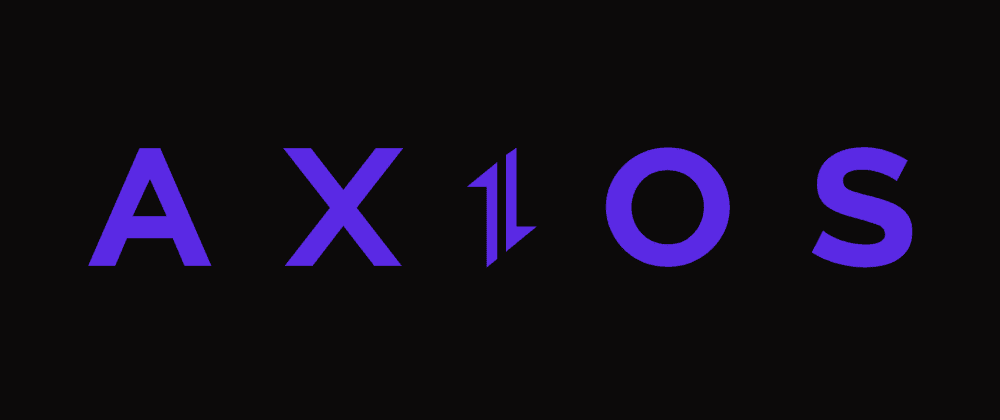
Axios is a popular JS library for making HTTP requests from browsers and Node.js environments. It offers a clean and easy-to-use interface for handling asynchronous data fetching, supporting promises for efficiently handling of responses and errors. Axios simplifies the process of sending and receiving data between applications and servers, making it a powerful tool for web development.

Backend Development Languages
-
Java

Java is a versatile language with a strong emphasis on stability and performance. It’s often used for building enterprise-level applications due to its portability, extensive libraries, and community support.
-
PHP

PHP has been a staple of web development for years. While it’s sometimes used with frameworks like Laravel, it’s also utilized for various web projects due to its ease of use and wide adoption. Hire a PHP developer to create dynamic and interactive web applications.
-
C++

C++ is a versatile programming language known for its speed and performance. It is an extension of the C programming language, offering object-oriented programming (OOP) features like classes and templates. C++ is widely used in various applications, including software development, game development, system programming, and high-performance computing, where efficiency and control over hardware are essential.
Backend Development Frameworks
-
Node.js

Node.js is a JavaScript runtime that allows developers to build backend applications using the same language as the frontend. It’s known for its event-driven, non-blocking architecture, making it suitable for building fast and scalable network applications. Hire Node.js developers to achieve fast, responsive, and resource-efficient solutions for modern web development needs.
-
Python (Django/Flask)
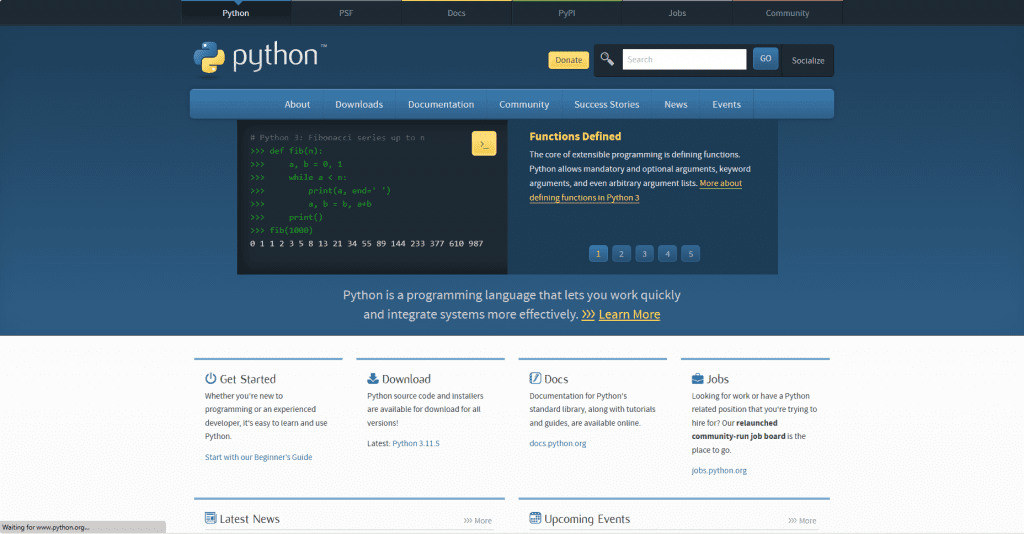
Python is a versatile programming language with frameworks like Django and Flask for backend development. Django offers a full-stack framework with built-in features like ORM, authentication, and admin interfaces, while Flask is a lightweight option for building simple to complex applications.
-
Ruby on Rails

Ruby on Rails (often referred to as Rails) is a backend framework for building web applications using the Ruby programming language. It is one of the most widely used backend technologies. Rails follows the convention over configuration (CoC) and doesn’t repeat yourself (DRY) principles, promoting rapid development and clean code.
Frontend vs Backend Development: Factors Affecting Cost

The cost of frontend vs backend development can vary based on several factors. Here’s how they affect the cost of each:
Factors Affecting Frontend Development Cost
| Complexity of Design | Elaborate and intricate designs require more effort to implement, leading to higher frontend development costs. |
| Interactivity | The level of interactivity and dynamic features (animations, real-time updates) influence the complexity and cost. |
| Responsive Design | Ensuring the application works seamlessly across various devices and screen sizes adds complexity and cost. |
| Third-Party Integrations | Implementing integrations with external services, APIs, or libraries can affect costs. |
| Testing | Rigorous testing for various devices, browsers, and scenarios adds to development time and expenses. |
Factors Affecting Backend Development Cost
| Functionality | The complexity of features and functionalities to be implemented affects backend development costs. |
| Database Management | Complex data structures and database interactions impact development and testing time, raising costs. |
| API Development | Creating well-documented and efficient APIs for frontend communication can influence the backend cost. |
| Security | Implementing robust security measures, encryption, and authentication mechanisms may increase costs. |
| Server Infrastructure | Managing server resources, hosting, and deployment can influence ongoing operational costs. |
| Scalability | Architecting the backend for scalability to handle increased traffic can involve additional costs. |
Frontend vs Backend Developer: Salary

Frontend and backend developer salaries can vary significantly based on factors such as location, experience, skillset, and the specific company or industry. However, I can provide you with a general overview of the salary ranges for both roles:
Frontend Developer Salary
| Experience Level | Annual Salary |
| Junior-Level | $40,000-$50,000+ |
| Mid-Level | $55,000-$80,000+ |
| Senior-Level | $80,000-$110,000+ |
Backend Developer Salary
| Experience Level | Annual Salary |
| Junior-Level | $50,000-$70,000+ |
| Mid-Level | $60,000-$100,000+ |
| Senior-Level | $100,000+ |
Note* Remember that these figures are approximate and can vary significantly based on factors like the cost of living in different regions, the demand for developers, the company’s size and reputation, and the specific technologies and language proficiency. You will find the ultimate guide to hiring and managing dedicated developers useful.
Word From Author
In essence, frontend vs backend development are the yin and yang of web development. They coexist symbiotically, each enhancing the other’s strengths to produce dynamic, user-centric digital experiences that have become integral to our lives.
Frontend vs backend development are two sides of the same coin that collaborate harmoniously to craft the digital experiences we encounter daily. Top Frontend development companies focus on the user interface (UI) and user experience (UX), while backend development manages the behind-the-scenes functionality that powers these interfaces.
So, whether you’re drawn to the frontend’s artistic canvas or the backend’s intricate mechanisms, the world of web development welcomes you to shape the digital landscape with your creativity and technical prowess.
Which one does your project need?
Frontend Developer: Craft visually engaging user interfaces using HTML, CSS, and JavaScript. Ideal for those passionate about design and user experience.
Backend Developer: Build the foundation of web applications, managing databases, servers, and business logic. Suited for those who enjoy solving complex technical challenges.
Fullstack Developer: Combine frontend and backend skills to create entire web applications. Perfect for those who desire end-to-end understanding and versatility.
We hope that this article has clarified the difference between frontend vs backend development. If you are still left with any doubt, feel free to connect with our frontend, backend, or fullstack development team.
Frequently Asked Questions
Frontend vs backend development: Which takes less time to develop?
Frontend development generally takes less time to develop compared to backend development. Frontend focuses on the user interface and interactions, while backend involves complex logic, database management, and security measures. However, the exact time can vary based on project complexity, features, and team expertise.
Which is the best technology for frontend development in 2024?
React continues to be a leading choice for frontend development due to its flexibility, large community, and performance. Find the cost to hire a dedicated ReactJS developer in India.
Which is the best technology for backend development in 2024?
Node.js remains a popular choice for backend development due to its scalability, non-blocking architecture, and versatility. However, the best technology can depend on project requirements and industry trends, so staying informed about the latest advancements in 2024 is essential.
Frontend vs backend development: Which is easier to learn for newbie developers?
Frontend development is often considered easier for newbie developers to learn. It involves creating the visual part of a website, focusing on design, styling, and user interactions. Backend development deals with server-side logic and databases, requiring a deeper understanding of programming concepts and architecture.
How to outsource/offshore frontend and backend development?
To Outsource frontend and backend development:
- Defining project scope and requirements.
- Researching reputable outsourcing platforms or agencies.
- Creating detailed job listings specifying skills.
- Evaluating proposals, portfolios, and conducting interviews.
- Selecting developers aligned with your needs, budget, and communication preferences for a successful partnership.
Read our latest blog to find out the offshore software development rates by country in 2023.




